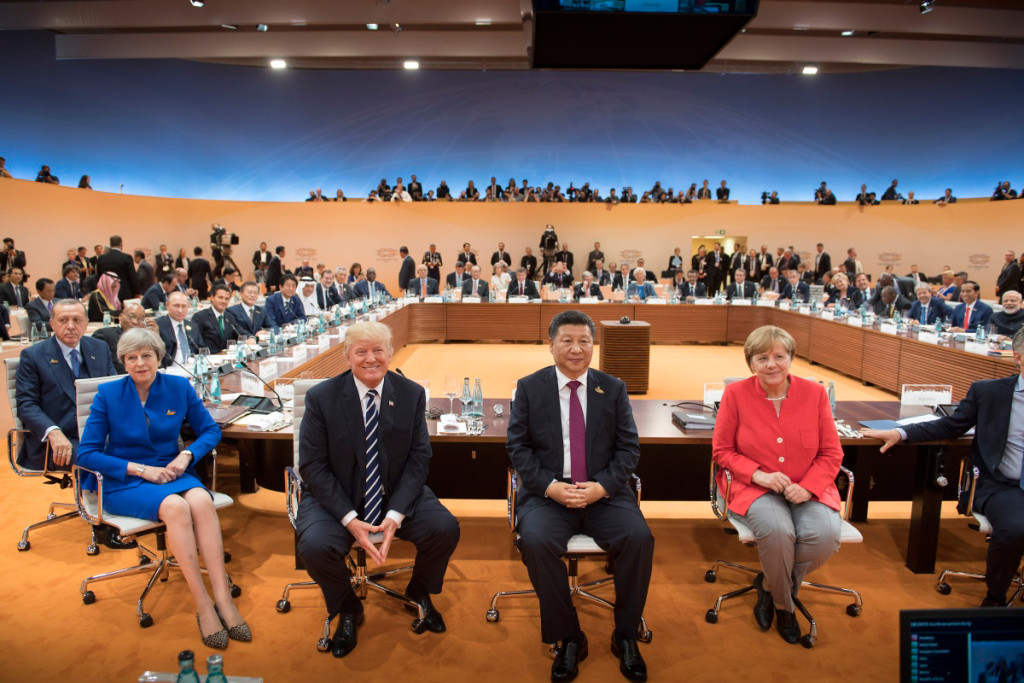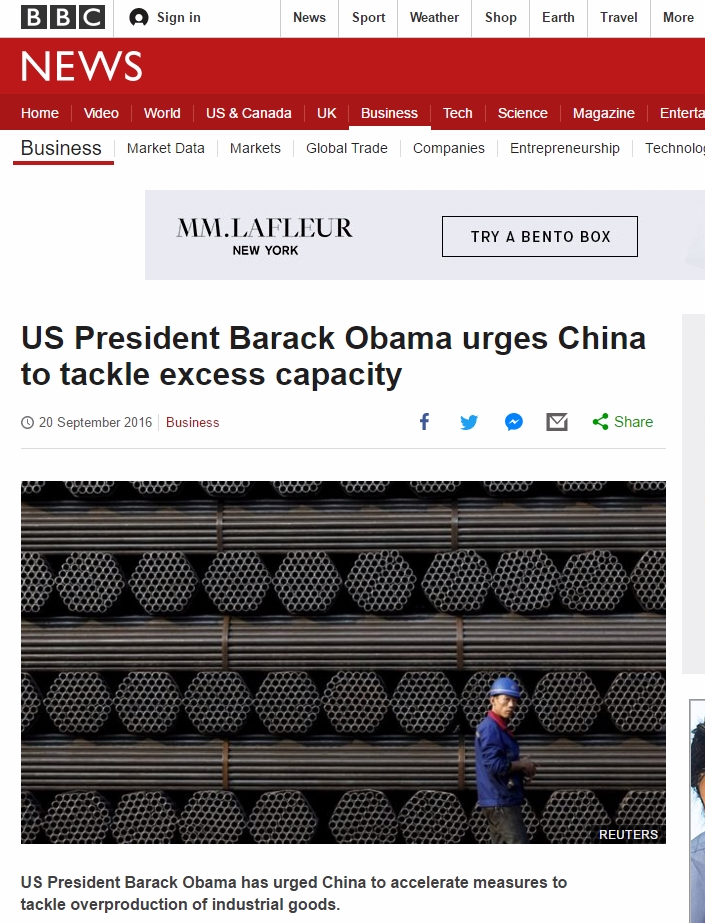
Don’t get distracted. The real problem lies with China.
President Trump is in Europe this weekend for the annual G20 summit. We wrote about the summit earlier this week, and how steel is likely to dominate much of the discussions about trade.
Indeed, the Commerce Department’s ongoing Section 232 investigation into whether steel imports pose a national security threat is among the top trade topics. It's been heated.
As we noted earlier, the Europeans and traditional allies like Canada, Brazil and Japan are very concerned about how the investigation might impact them, and the White House purposely put off releasing the report until after the G20.
It’s so far unclear what might happen at the G20 regarding steel (we’re not expecting much). But one of the things we’ve noticed in the coverage is that the steel issue is being framed as something Trump just, like, thought up. Here’s a line from a July 7 article in the Washington Post:
The Trump administration has blamed China for what it says is a “global overcapacity” of steel, essentially arguing that the Chinese government is subsidizing the steel industry and allowing its producers to create and export so much steel that it drives down prices and makes it difficult for U.S. producers to compete.
Whoa guys.
Let’s be clear: The Trump administration is far from alone in arguing that China is behind the global overcapacity of steel. In fact, this was a top concern for the Obama administration. Check out the BBC’s coverage from last year’s G20 summit:

Not only was former President Barack Obama using the summit — his last one, we’ll point out — to push for action on China’s industrial overcapacity, but the Europeans and others agreed with him.
One of the outcomes of the 2016 summit centered on steel, with nations agreeing to form a “global forum” to find ways to reduce steel production and stabilize the market. Here’s what Reuters reported at the time:
European and U.S. leaders have pressed China to accelerate capacity cuts, blaming its big exports on slumping prices and accusing it of dumping cheap metal into foreign markets.
Sounds a lot like what the Trump administration is arguing, right?
Look, we fully understand why there is skepticism of Trump, and the press is right to question his decisions. The president has made some highly controversial moves, to put it mildly. Then there’s that whole ongoing FBI investigation into Russia’s meddling in the 2016 presidential election — and Trump certainly hasn’t helped himself there.
And don’t forget about the president’s tendency to create his own controversies.
But China’s industrial overcapacity was causing global problems long before Donald Trump became president. If China does not significantly cut back on its production, those global problems could continue after Trump leaves office.
The data on this is clear. As Duke University’s Center on Globalization, Governance & Competitiveness outlined in a 2016 report, the global steel market has grown to 2,300 million metric tons (MT) while only needing 1,500 MT to meet demand. Seventy-five percent of new steel stock since 2000 has come from China.
China, by the way, has even admitted it is producing too much steel, and has repeatedly pledged to reduce the amount of steel it makes. It repeatedly has broken those promises; its steel production even increased in 2016.
Tens of thousands of American steel workers have faced layoffs and dozens of facilities have closed because of unfairly traded steel imports. On the aluminum front — the focus of the other Section 232 investigation — there’s just five aluminum smelters left in the United States, and only one that can produce high purity aluminum needed for fighter jets like the F-35.
There is room for debate over the best way to tackle steel and aluminum imports, including what the eventual outcome of the Section 232 investigation should look like.
Here at the Alliance for American Manufacturing, we strongly believe that these dumped imports pose a national security threat. We also believe that China isn’t going to do anything about its overcapacity problem until it feels real pressure from the international community, and the United States should take the lead on exerting that pressure.
There's no doubt that Trump is taking on steel and aluminum imports as part of his trade agenda. But it’s dishonest and unproductive to frame the issue as just another thing drummed up by Trump.
China is the root cause of this crisis. And despite the current tensions between Trump and well, nearly everybody else at the G20, we hope China will remain the focus as world leaders come together to find ways to solve the crisis, once and for all.
